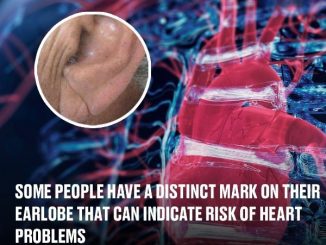Cancer has long been one of the most formidable challenges in medicine, affecting millions worldwide each year. Despite significant advancements in cancer therapies, current treatments often come with severe side effects, limited effectiveness, and the risk of recurrence. However, a groundbreaking discovery by South Korean scientists offers new hope. Researchers have developed a revolutionary technology capable of transforming cancerous cells back into normal cells, potentially paving the way for innovative, less invasive cancer treatments.
The Revolutionary Discovery: Transforming Cancer Cells

At the forefront of this breakthrough is a research team from the Korea Advanced Institute of Science and Technology (KAIST), led by Professor Kwang-Hyun Cho of the Department of Biological and Brain Engineering. Unlike conventional cancer treatments that aim to destroy cancer cells—often harming healthy tissue in the process—this new approach seeks to revert cancer cells to their normal state.
The scientists discovered that cancer development involves the regression of normal cells along their differentiation trajectory. Differentiation is the process through which cells mature into specific types with distinct functions. By studying this process, the researchers identified genetic “switches” that, when activated, guide cancer cells back to a normal state.
Through advanced digital simulations of gene networks and rigorous molecular and cellular biology experiments, this method was tested successfully on colon cancer cells, demonstrating its potential effectiveness. The results were further validated in animal studies, showing promise for future applications across various cancer types.
How This Technology Works
- Mapping the Differentiation Trajectory:
The researchers used digital simulations to replicate the gene network associated with the differentiation process of normal cells. This allowed them to pinpoint key genes and pathways involved in cellular maturation. - Identifying Key Genetic Switches:
Using simulation analysis, the team identified specific “switches” within the gene network that could reverse the regression seen in cancer cells. - Applying the Switches to Cancer Cells:
When these switches were introduced to colon cancer cells, they effectively reverted to a state resembling normal colon cells, ceasing to exhibit cancerous behavior. - Validation Through Experiments:
This phenomenon was confirmed through laboratory experiments and animal studies, solidifying the potential of this approach as a transformative cancer therapy.
Why This Discovery Is Groundbreaking
This innovative approach has several distinct advantages over traditional cancer treatments like chemotherapy and radiation:
- Minimal Side Effects: By transforming malignant cells instead of destroying them, this method avoids damage to healthy cells, significantly reducing side effects.
- Reduced Risk of Recurrence: Since the cancerous behavior is reversed rather than suppressed, the likelihood of recurrence may decrease.
- Applicability to Various Cancer Types: While the study focused on colon cancer, the findings suggest that this method could be adapted to other forms of cancer by identifying relevant genetic switches.
As Professor Kwang-Hyun Cho stated, “The fact that cancer cells can be transformed back into normal cells is an amazing phenomenon. This research demonstrates that such reversal can be systematically achieved.”
Understanding the Causes of Cancer
To fully appreciate the significance of this breakthrough, it’s essential to understand how cancer develops. According to Healthline, there are over 200 types of cancer, all stemming from mutations in cellular DNA. These mutations disrupt normal cellular function, leading to uncontrolled growth and tumor formation.
Factors That Trigger Cancer

- Inherited Genetic Mutations: A small percentage of cancers are caused by mutations passed down from parents.
- Acquired Mutations: Most mutations occur after birth due to external factors like smoking, radiation, carcinogenic chemicals, and obesity.
- Environmental and Lifestyle Influences: Chronic inflammation, lack of exercise, and exposure to viruses can also contribute to DNA mutations.
While the body has mechanisms to correct errors in DNA, some mistakes go unnoticed, allowing cells to become cancerous. This new technology could provide a way to intervene and reverse the process before it leads to full-blown cancer.
Challenges With Current Cancer Treatments
Current cancer therapies, including chemotherapy, radiation, and targeted therapies, aim to kill cancer cells but face significant limitations:
- Drug Resistance: Cancer cells can develop resistance to treatments, rendering them less effective over time.
- Harm to Healthy Cells: These treatments often damage surrounding healthy tissue, causing side effects such as nausea, fatigue, and hair loss.
- Recurrence: Even after successful treatment, cancer can return, sometimes more aggressively than before.
This breakthrough in cell transformation offers a way to overcome these challenges by focusing on reprogramming cancer cells instead of destroying them.
Implications for Future Cancer Therapies

The potential of this discovery extends far beyond colon cancer. By leveraging this method, scientists could develop personalized cancer therapies tailored to an individual’s unique genetic makeup. Additionally, this approach may lead to the creation of preventative treatments for high-risk individuals, targeting cells before they become cancerous.
Moreover, the ability to reverse cancerous behavior could open new doors in regenerative medicine, allowing damaged or dysfunctional tissues to be restored to their original state.
The Role of Advanced Technology in Cancer Research
This breakthrough underscores the importance of technology in advancing cancer research. Digital simulations of gene networks were pivotal in identifying the key genetic switches involved in cellular differentiation. These tools allow researchers to analyze complex biological systems in ways that were previously unimaginable, accelerating the discovery of innovative treatments.
Conclusion: A New Era in Cancer Treatment
The discovery by KAIST scientists marks a monumental shift in how we approach cancer treatment. By transforming malignant cells back into normal cells, this revolutionary technology addresses the root of the problem while minimizing harm to the body. While more research and clinical trials are needed, the potential implications for millions of patients worldwide are profound.
As we stand on the brink of a new era in cancer therapy, one thing is clear: this breakthrough could change the lives of countless individuals, offering hope for a future where cancer is not only treatable but reversible.


